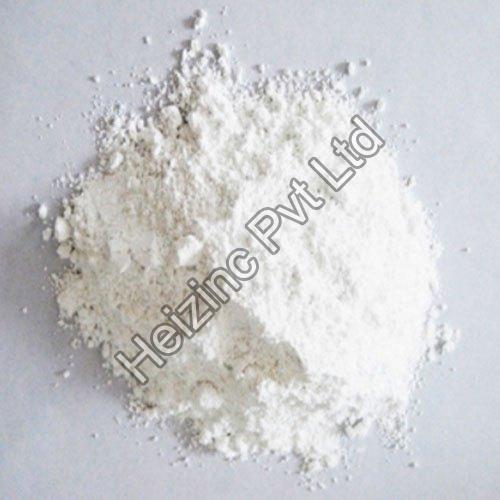Palanpur, Banaskantha, Gujarat
- GST NO. : 24AAFCH4851E1ZT
Uses And Benefits Of Calcite Powder
Posted by Admin on March, 14, 2022

Calcite Powder is an instinctive form of Calcium Carbonate with especially high whiteness, purity and free-flowing. White Calcite Powder is generally used in plastics as filler, because of its high dispensability, low oil absorption, high impact resistance, smooth surface finish, easy processing, compatibility with polymers and other organic additives and excellent dimensional stability. You can choose to deal with the reputed Calcite powder Supplier in India and get Calcite powder at a reasonable price.
These suppliers are well-known for their high quality and consistency, and as a result, it is widely employed in a variety of industries. The raw material used for making this calcite powder is top quality. You can also search on google and get the list of Wholesale Calcite Suppliers in India and check ratings and reviews of these companies based on customer feedback who have interacted with them earlier.
Uses and Commercial Importance of Calcite Powder
Micronized calcite powder is used as a filler in innumerable industries. The fine powdered form of calcite has numerous uses depending upon the whiteness, purity in terms of caco3 content and plastic micronized size which ranges from 20 microns to 5 microns.
Micronized calcite powder is mainly used as extenders in all types of paint industries and filler for polymers, rigid PVC pipes, PVC profiles & flooring, HDPE pipes filled pp, colour master batches, ink, paper coating, pharmaceutical and rubber industries. seed filler in plastic and paint industries. It has low plasticizer absorption and hence can provide a higher degree of loading, the result is unmatched economies in manufacturing.
Natural Occurrence of Calcite
Calcite is a common component of sedimentary rocks, mostly of limestone, which is formed primarily from the shells of dead marine organisms. Limestone composes about 10% of sedimentary rock. It is the major mineral found in metamorphic marble.
Calcite is a primary constituent of the shells of numerous marine organisms, containing plankton (such as coccoliths and plankton foraminifera), the hard parts of red algae, some sponges, brachiopods, echinoderms, some serpulids, most bryozoan, and parts of few bivalves\' shells (such as oysters and rudists).
Calcite can be found in spectacular form in New Mexico's Snowy River Cave, where microorganisms are ascribed with natural formations. Trilobites, which went vanished a quarter billion years ago, had compound eyes with lenses made of clear calcite crystals.
Calcite Formation Process
Calcite formation can occur via diversification of mechanisms, ranging from the classical terrace ledge kink model to the crystallisation of poorly ordered precursor phases (amorphous calcium carbonate, ACC) via an Ostwald ripening process or nanocrystal agglomeration.
Properties
1. Tactile properties: It is uneven and abrasive.
2. Visual properties:
• Color: It is mostly white but is also found in different shades like pink, brown etc, depending upon the impurities present. Colour is usually white or none, though shades of grey, red, orange, yellow, green, blue, violet, brown, or even black can take place when the mineral is charged with impurities.
• Luster: Its lustre is vitreous to pearly on cleavage surfaces in crystallized varieties and vitreous to resinous to dull in massive forms.
• Streak: Its streak is white.
• Diaphaneity: It is transparent to opaque.
3. Structural properties: It has a demarcating Mohs hardness of 3, a specific gravity of 2.71
4. Combustion properties: It is non-explosive and non-inflammable.
5. Chemical properties: It disperses in acids.
6. Affinity to water: Calcite powder can adsorb and absorb moisture. However, it is a very poor solvent in pure water. In groundwater or rainwater, it can further be dissolved or precipitated relying on several factors including the water temperature, pH, and dissolved ion concentrations. For instance, ambient carbon dioxide, due to its acidity, has a slight solubilizing effect on calcite.
It displays an unusual characteristic called retrograde solubility in which it becomes less soluble in water as the temperature increases. In any case, whether dissolved or suspended, calcite powder has a high dispersibility in water.
7. Affinity to oil: It has low oil absorption volume.
8. Heat properties: • Thermal conductivity: 5.526 to 4.646W/(m K) at 273 K • Specific heat capacity: 0.203 cal/(g K) at 273 K • Thermal expansion coefficient: 25.8 x 10-6/K to -4.7 x 10-6/K • Melting point: 1612 K: Decomposition: 850 °C
9. Electric properties: It is a poor conductor of electricity.
Benefits Of Calcite Powder
1. Improved Mechanical properties in thermoplastic applications
2. Greater Flow qualities
3. It Minimizes chalking
4. In paint and powder coating material, glass and whiteness are the main considerations
5. Excellent dispersion characteristic.
This entry was posted on March, 14, 2022 at 16 : 01 pm and is filed under Calcite Powder. You can follow any responses to this entry through the RSS 2.0 feed. You can leave a response from your own site.
Search
Category
Recent Posts
